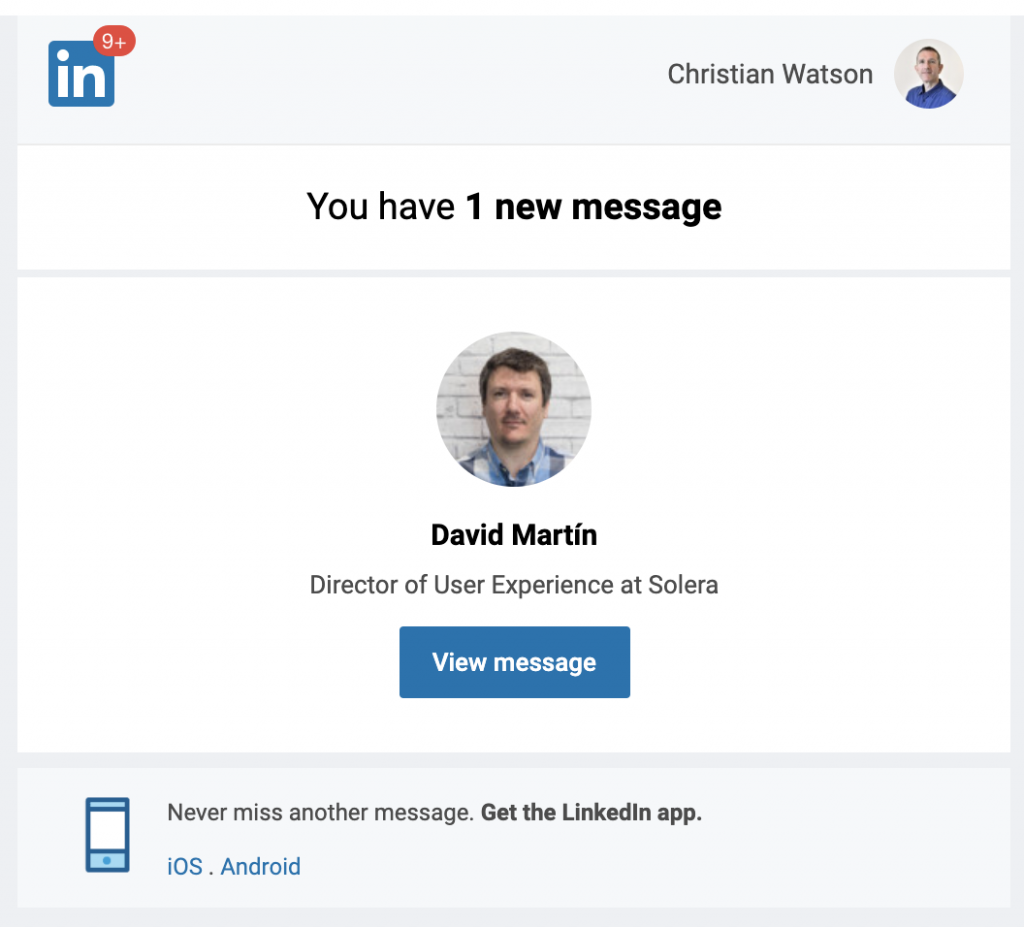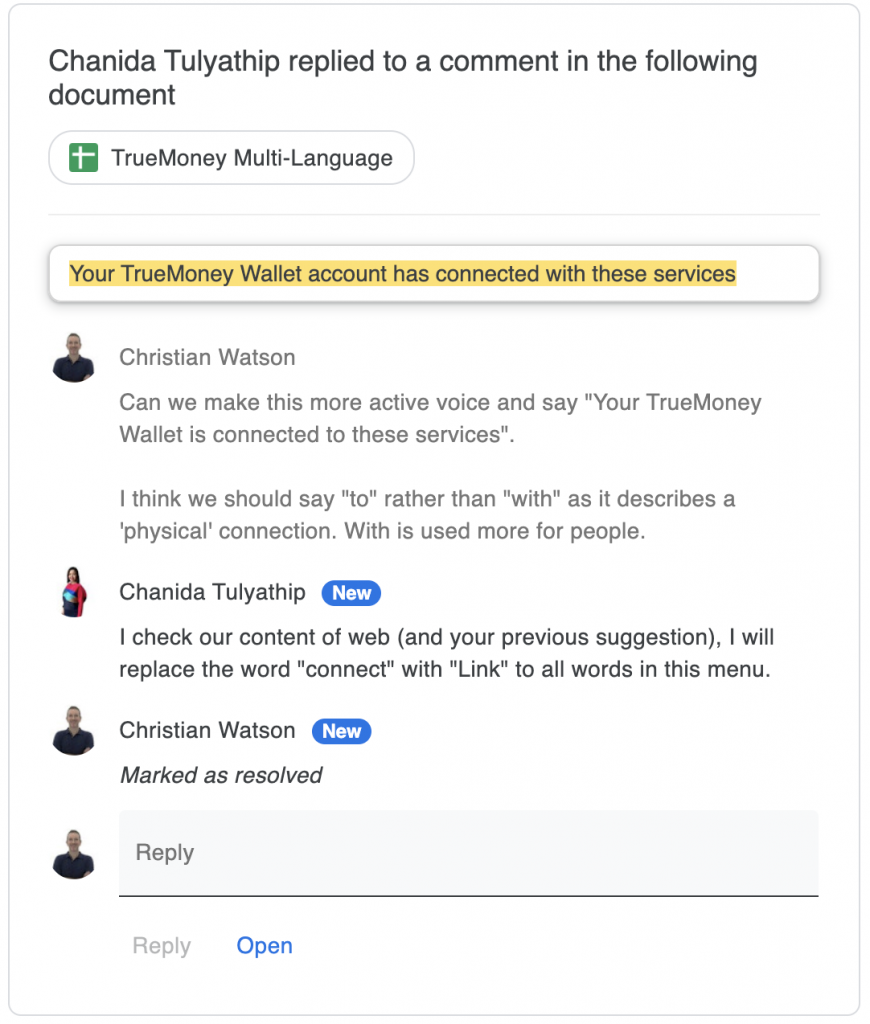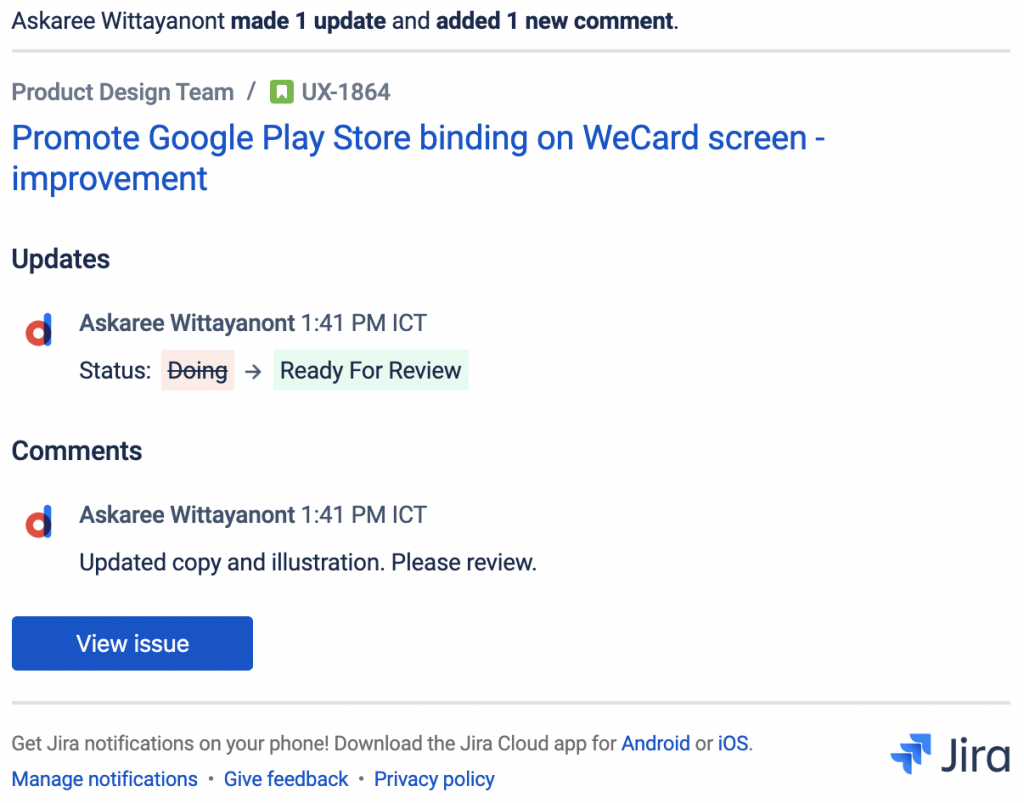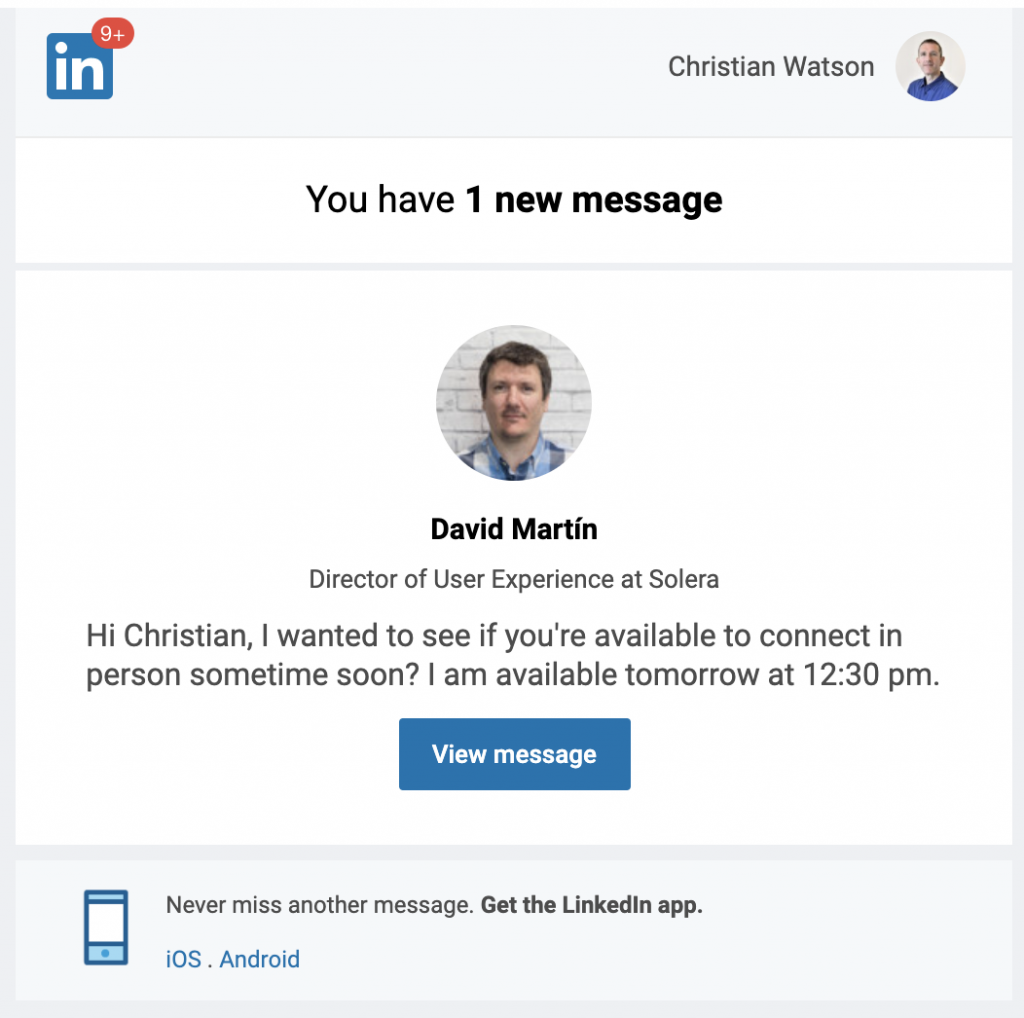Like many people, I receive multiple LinkedIn direct messages a week, each with its own email notification, like the one below. I find it such a frustrating experience, especially in 2020.

Why? Because I cannot view the message without opening LinkedIn. I don’t even get to see a preview of the message so that I know if it’s worth taking the effort to open LinkedIn to view the rest and to possibly respond.
In addition, I’m reluctant to view the message on LinkedIn because I don’t know whether this informs the sender that you have viewed their message but perhaps have decided not to respond. This is why I never allow read receipts for emails.
I assume that LinkedIn does this to force you to visit their website or app, but it’s a frustrating, user-unfriendly experience. Especially when there are examples of companies doing a much better job.
Take Google Docs, for example. When someone leaves a comment on a document, you receive an email with their comment, the previous comments for context, and you have the ability to reply or take action directly from your inbox! How’s that for putting the needs of the user first?

Jira doesn’t do this quite as well, but when someone leaves a comment on a Jira ticket you receive an email with the comment and you can respond just by replying to the email.
You can’t reply to LinkedIn direct message emails because you don’t know the content of the message you’re replying to.

Imagine if LinkedIn direct message emails looked like the mockup below, where you can see the content of the message in your inbox? And imagine if you could reply to the message directly from your email client?

Admittedly, visits to the LinkedIn website would probably decline slightly, but user engagement would likely increase dramatically. I wonder, which metric is more important?
